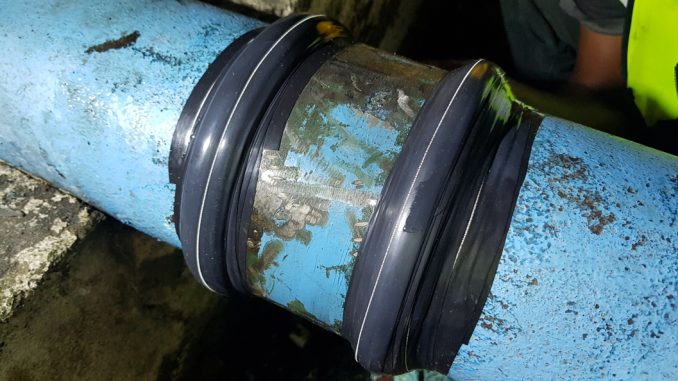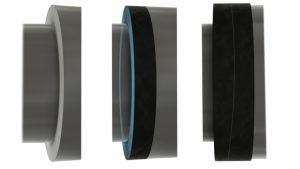
A leaking saddle joint is often considered one of the hardest pipe repair applications going. We have seen countless examples of pipes being left to leak because the problem has proven too complex or time-consuming to address.
Many leaking saddle joints only seep water rather than it gushing out as a full-blown burst, which itself lends to a blind eye being turned.
But with climate change, population growth and supply issues making each drop more precious, a pipe which seeps for weeks, months and years is wasting water at a time when pipe repair has never been so important.
The main challenge with saddle joint repair comes with the step between the original pipe and the saddle which has been fitted over it.
Saddles are installed – normally via welding – to reinforce sections which have less strength because of an intentional hole in the line, for example where there is a tap or a tee connection.
They sit around a pipe, adding thickness. This thickness means that the saddle will sit higher than the line, leaving a step.
If water starts escaping through this step, it can be difficult to stop. A pipe repair clamp is only effective on a straight, flat pipe – it has no chance of effectively sealing a saddle joint.
Epoxy putty might be able to plug the leak, but only if the pipe can be isolated and completely dried. Whilst water seeps out, putty will struggle to gain the required adhesion to the surface.
You can see the challenges that come with sealing a leaking saddle joint. Which is why this technique developed in Malaysia – a country where saddle joints are frequently found – using Wrap & Seal Pipe Burst Tape is proving a game changer.
What is Wrap & Seal Pipe Burst Tape?
Wrap & Seal is a waterproof repair tape made from self-amalgamating silicone designed to seal live leaks on pipes.
It stretches by 300 percent and fuses together, forming a solid rubber band. Multiple tapes can be applied over each other and will fuse in the same way, building up layers of thickness and pressure resistance.
These layers of thickness are what makes Wrap & Seal so useful when it comes to saddle joint repair, as it can effectively be used to remove the step from a pipe.
Remove the step from the pipe
Before application, the pipe and the saddle joint should be cleaned of loose material and corrosion using sandpaper, micro-mesh abrasives or an angle grinder.
The application of Wrap & Seal begins with the tape being applied directly next to the step. It is wrapped directly over itself with each rotation adding another layer and moving the tape closer to being level with the top of the saddle.

Wrap across the saddle joint
Once Wrap & Seal has been built level with the step, wrapping moves across the saddle with each rotation overlapping the last by 50 percent.
Wrap & Seal should be applied 50mm across the joint to achieve a good connection. It then returns to directly over the edge of the joint, where water was escaping the leak area.
Build up pressure resistance over the edge of the joint
Having wrapped 50mm onto the saddle and back, Wrap & Seal is then applied directly over the leak area on the edge of the joint.
Building up a ridge here increases the pressure resistance of the repair. Enough tapes should be used until the user is satisfied that the leak has been fully arrested.
Applying Wrap & Seal via the above three steps creates a repair which encapsulates the entire leaking end of the saddle joint, fully sealing it and ensuring that there are no leak paths through which water can escape.
Reinforce the repair using a composite repair bandage
An optional stage to reinforce the repair is to wrap it with a composite repair bandage should as SylWrap HD.
After being activated with water, SylWrap HD is wrapped and smoothed over the top of the Wrap & Seal. It will cure within minutes to form a rock hard, impact resistant shell protecting both the tape and the pipe.

Leave a Reply